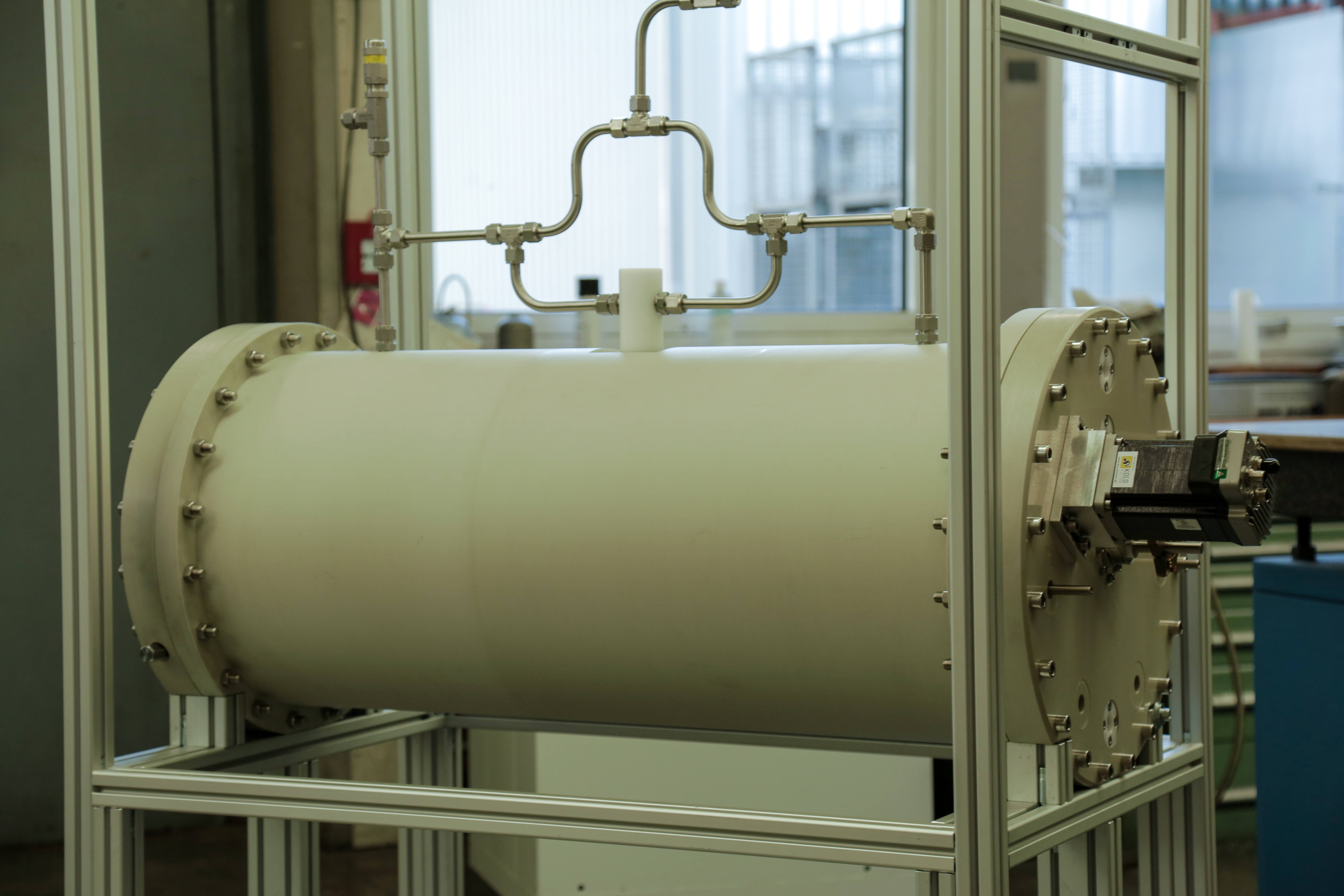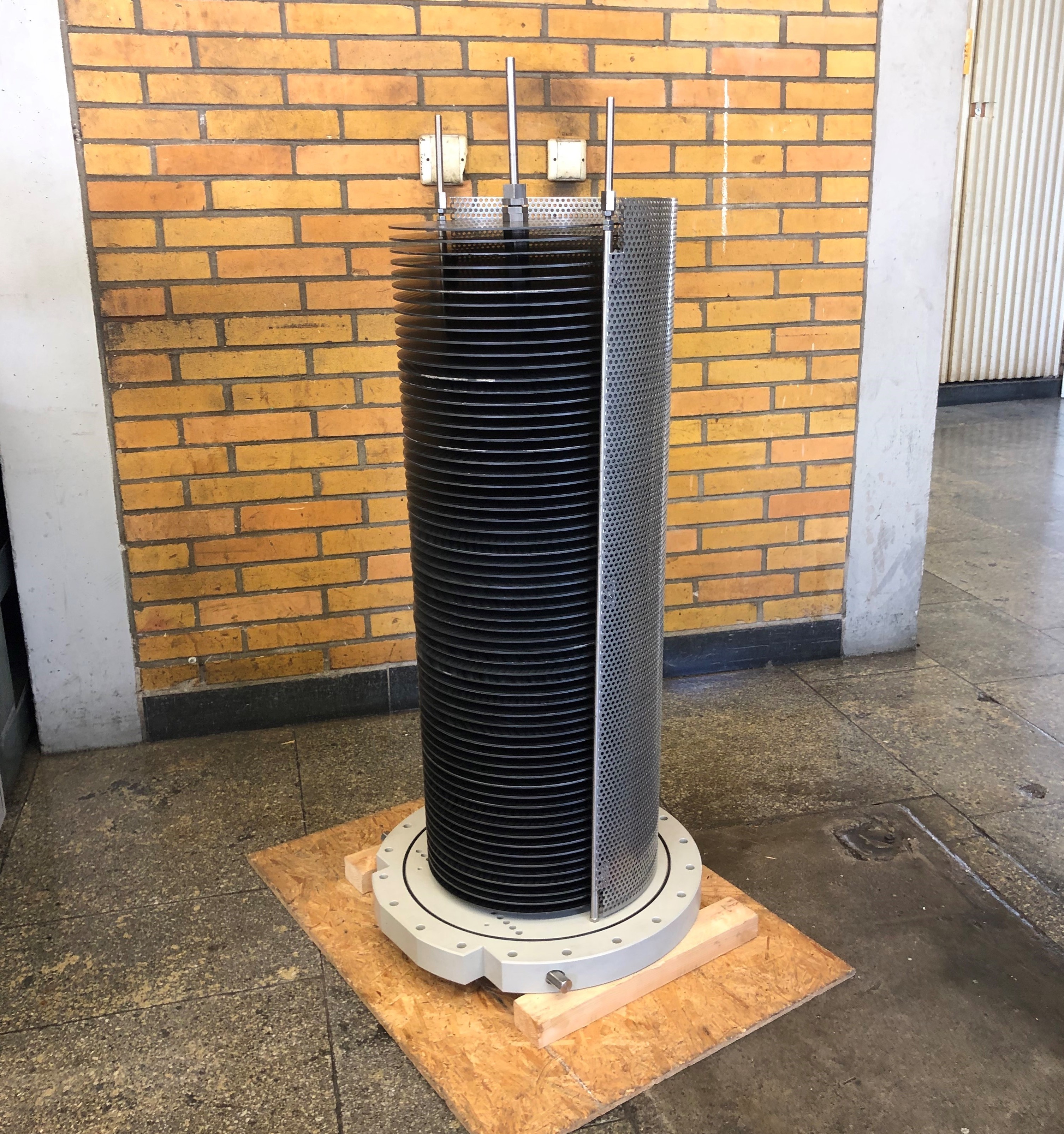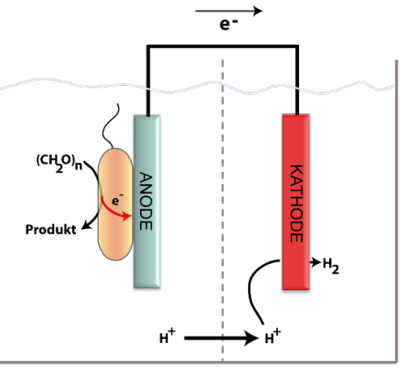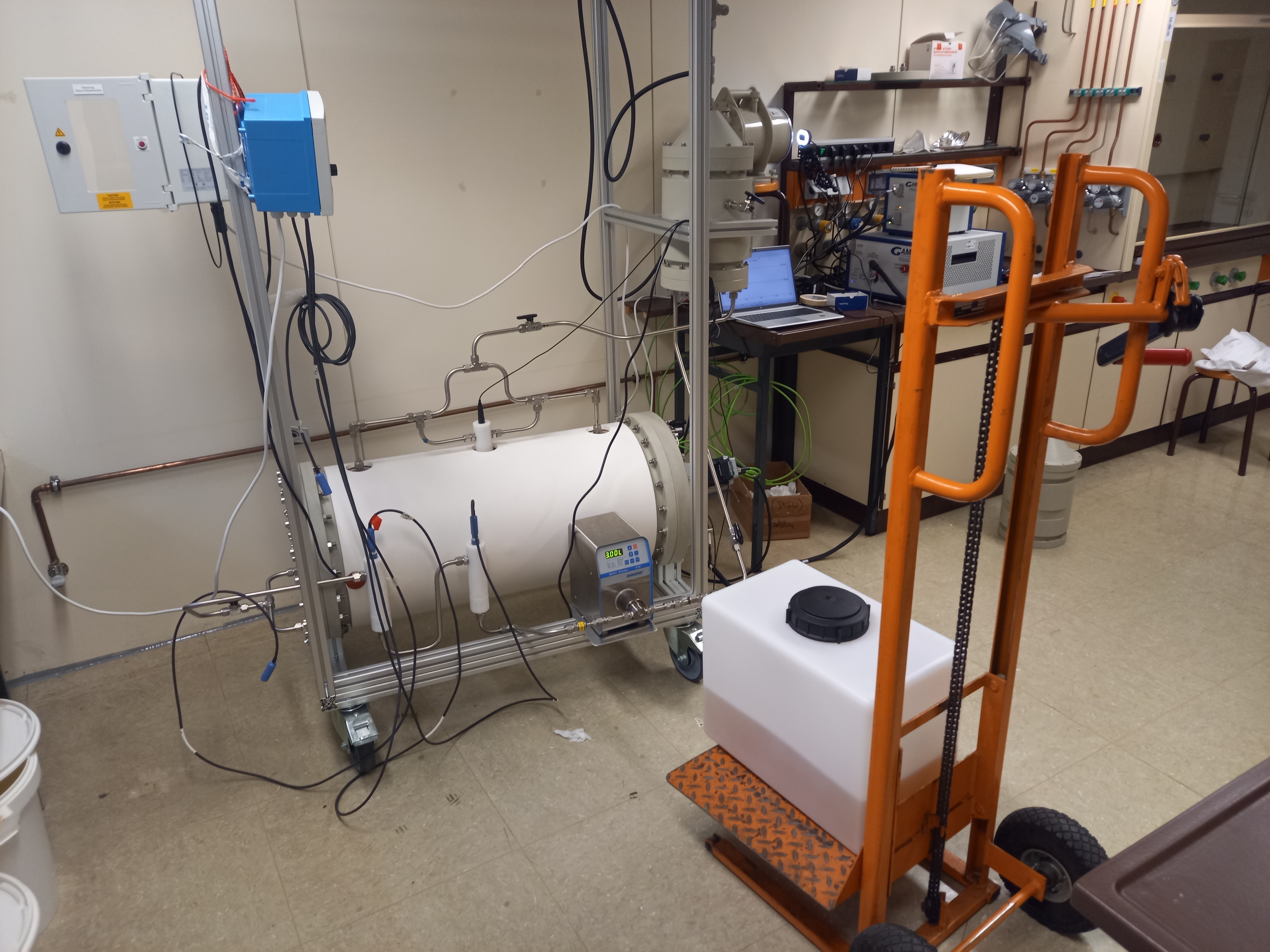Main navigation
PeePower™ – energy from urine
The objective of the PeePower™ BUGA 2023 collaborative research project is to produce green hydrogen and platform chemicals from wastewater. This fits in nicely with BUGA 2023’s (German National Garden Show) four major themes, namely, climate, energy, environment and food security.
Nine billion cubic metres of wastewater accumulated in Germany in 2019. This includes water that has been used for domestic, commercial and agricultural purposes (grey water) as well as precipitation from built-up areas.1) Grey water in particular contains significant proportions of organic residues that have the potential to be recycled. In 2020, Baden-Württemberg's wastewater treatment plants generated 192 million kWh of electricity and 271 million kWh of heat from sewage gas, which they consume almost entirely themselves.2) Furthermore, the sewage sludge produced in the sewage treatment plants during the purification of wastewater is to a large degree thermally processed. The recovery of phosphorus from sewage sludge is in preparation.
Hydrogen: energy carrier of the future
In the joint research project PeePower™ BUGA 2023, the DVGW Research Station at the Karlsruhe Institute of Technology’s (KIT) Engler-Bunte-Institut (EBI), headed up by Prof. Dr. Harald Horn, and the Institute for Technical Microbiology at the Technical University of Hamburg, headed up by Prof. Dr. Johannes Gescher, are now focussing on a specific fraction of grey water, i.e. urine. The researchers from Karlsruhe have already been able to show on the laboratory scale with a 10-litre reactor that it is possible to generate hydrogen from urine. "Transferring this to a 100-litre system, which can be operated continuously for six months, goes beyond the laboratory scale," explains chemical engineer Jonas Ullmann, who is supervising the project at the EBI. Prof. Yannis Ieropoulos from the University of Southampton is advising the project.
Hydrogen is an excellent energy carrier with respect to weight. One kilogramme of hydrogen contains 33 kWh of usable energy, whereas diesel only holds about 10 kWh/kg.3) It is therefore not surprising that hydrogen is considered the energy carrier of the future. At present, green hydrogen is generated from renewable sources through electrolysis. "In concrete terms, this project is about using urine as a starting material for generating hydrogen. Urine contains many biodegradable carbon compounds, which can be used by microorganisms as an energy source to generate hydrogen with less energy than is normally required when no microorganisms are involved," Ullmann explains. The project is intended to demonstrate proof of concept in the belief that this will open up possibilities to generate other chemical energy carriers or platform chemicals from organic waste streams on a similar scale.
Bacteria working as a team
The system will be tested at BUGA 2023 in Mannheim. For this purpose, the researchers will use a 100-litre reactor developed at the EBI based on a rotating biological contactor that serves as a microbial electrolysis cell. Such contactors are often used in biological wastewater treatment. Microorganisms grow on the surface of the contactor discs and form a biofilm. The electroactive bacterial species Shewanella oneidensis and Geobacter sulfurreducens will initially be used in a co-culture in the PeePower™ project. The project itself is funded by the Baden-Württemberg Ministry of the Environment, Climate and Energy Management as part of the BWPLUS funding programme. Shewanella oneidensis and Geobacter sulfurreducens are model organisms with special properties that come into their own when grown together. Over time, the microbial community will include other species that are also electroactive. Preliminary experiments on growing the two model organisms in urine were carried out at the Hamburg University of Technology. One of the issues addressed was to clarify whether urine has a growth-inhibiting effect on the bacteria above certain concentrations.
The electroactive bacteria are able to break down compounds of urine that contain carbon. They transfer the electrons obtained in the process to the conductive material (electron acceptor, anode) in the reactor. "In our case, we apply an electrical potential to the growth surface, which suggests to the microorganisms that this is their preferred electron acceptor and that they can transfer the electrons from inside the cell to the growth surface, the anode," explains the chemical engineer, who has previously worked on other projects involving water treatment. The electrons released at the anode are transferred to the counter electrode (cathode) via a voltage source in order to produce hydrogen (H2) through the reduction of protons. The Geobacter species is a good biofilm former, as it is very good at releasing electrons via pili and passing them on to the anode. Shewanella, on the other hand, can metabolise oxygen, which is helpful in counteracting potential oxygen contamination.
Numerous challenges remain
AT BUGA, a separation toilet will be used to collect solid and liquid components separately. The solid components will be composted with sawdust, and the liquid component, urine, will be collected in a storage tank and transferred to the aforementioned 100-litre reactor. The hydrogen produced will be used to power an on-site smartphone charging station via a 50 W fuel cell. "We expect to get more urine than we need, because urine is a ‘thick soup’ of organic carbon compounds. However, the amount of hydrogen produced also depends on how the process is managed because Geobacter can remetabolise hydrogen and thus reduce the yield. We expect that optimised process management and continuous application will generate at least 200 l of hydrogen per day," says Ullmann.
Urine poses a challenge for measuring systems such as the pH electrodes in the reactor. Urine is very salty and can therefore lead to wear and tear of the filigree measuring sensors. The researchers also want to find out how the native bacterial cultures in the urine change the desired co-culture on the growth surfaces.
Bioeconomy of the future
If the proof of concept at BUGA is successful, this type of hydrogen production could be used in office buildings equipped with urine-separating toilets, for example. But the researchers want more: "We want to show that organic waste streams can be made suitable for use with this kind of reactor," says Ullmann. This would be particularly interesting in a wastewater treatment plant, which contains very high amounts of organic components. At present, the carbon contained in wastewater treatment plants is only degraded to CO2. The goal is therefore to rethink wastewater treatment technology and make the valuable carbon usable with the researchers’ reactor concept. This would not only make it possible to produce energy carriers but also platform chemicals.
™ denotes trademark of University of West England, used under licence by University of Southampton
References:
1) Statista "Statistiken zur Abwasserwirtschaft": https://de.statista.com/themen/3492/abwasserwirtschaft-in-deutschland/#topicHeader__wrapper
2) Baden-Württemberg Statistics Office, press release: "Stromerzeugung aus Klärgas etwa auf Vorjahresniveau": https://www.statistik-bw.de/Presse/Pressemitteilungen/2021252
3) Hydrogen DIHK Fact Paper: https://www.dihk.de/resource/blob/24872/fd2c89df9484cf912199041a9587a3d6/dihk-faktenpapier-wasserstoff-data.pdf



